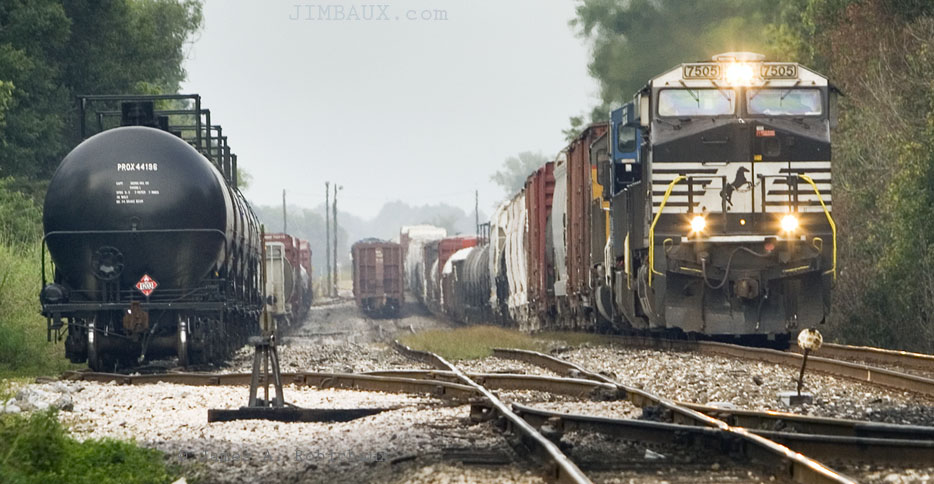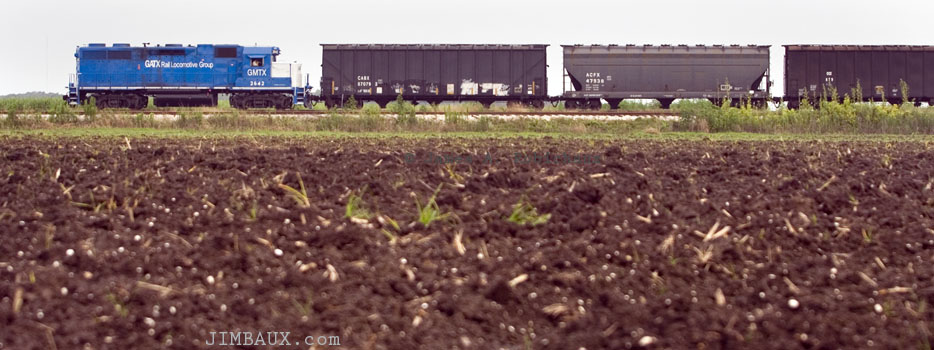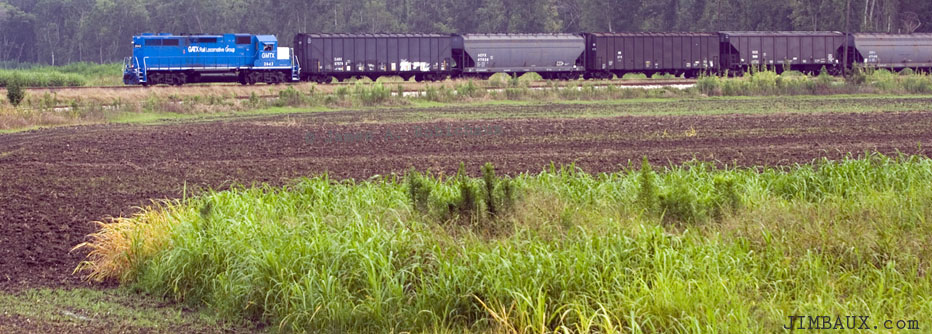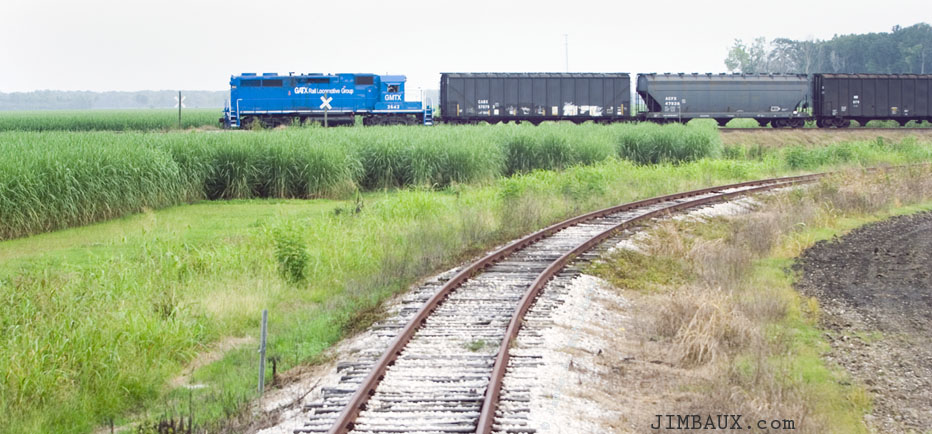[Jimbaux has learned that everything changes.]
We could just as easily say black and green in the headline, as you will soon see.
If I Could Turn Back The Years, You Could . . .
So, just like we did 15 days ago, we go back to the summer of 2007, and we have a look back at the grey day of 30 July 2007 as Jimbaux went back to Bayouland for a day or two. We start with Union Pacific’s Morgan City Local, and, no, I don’t recall if Chip was on this day’s train or if he was not; views of the full-size images don’t indicate such one way or the other either. Oh, well. Here’s the train on a cloudy day rounding the curve into the tree-tunnel at Chacahoula.
Yes, we are standing atop the truck for these first two shots. I think that John West, noted railroad photographer of the West and former vice president of GATX, would like these shots!
The below shot is perhaps one of my favorite-ever shots at Chacahoula, and please note that it’s good despite the fact that it is taken at high sun! Do you see those long grab-iron shadows? This is not a totally cloudy shot, though the lesson about cloudy photography that I learned on Rich Mountain only a year-and-a-half before does apply here! There’s something about the filtering of already-filtered-through-clouds lighting through the swampy trees that really works here.
Thoughts? What is your interpretation of my interpretation of the westbound LLS51 at Chacahoula on 30 July 2007? Oh, you might remember that even though this is essentially an afternoon shot, given the right conditions, you can do wonders here at the crack of dawn!
Later, Back To The Crucible
Here, we see the MNOEWX blasting through Schriever, but do you see the LLS51 off in the distance in the siding?
It looks like there’s a centerbeam flatcar at the end of the train, which would be for Dufrene Building Material which at the time was offloading lumber in Raceland near the post office.
Thibodaux Junction
Here’s a location not heretofore featured on Jimbaux’s Journal, a place that is really at the heart of Jimbaux’s art and science. Here’s a broadside view across a plowed sugarcane field.
The train is emerging from the east siding switch Schriever with its carbon black pickup, which, back then, would often occur at Schriever. The diverging track in the foreground is and was the beginning of the Napoleonville Branch, abandoned in 1998 beyond the point about as far from the track as from where we are viewing this scene. Also, yes, we are once again standing atop the truck for these last two shots.
The piece that you see in the foreground below is all that is left to the Napoleonville Branch, and no now-gone non-living thing do I miss more than that branchline. Cheesy as it may sound to you, it was like losing a close childhood friend.
I’ll never forget the Napoleonville Branch. It stays a part of me today, and its presence in my life as a youngster has truly influenced the work that the rest of you see displayed here today.
Merci,
Jimbaux







{ 4 comments… read them below or add one }
I like your wide angle shots, showing the fields. They give you a feel for the landscape. Nice work. Places important to your childhood will always be what shapes you as an adult. We are all just grown up kids and if we aren’t we are taking life too seriously.
Actually, they are all telephoto shots. Five years later, I still have yet to master – or come close to mastering – good cloudy-day wide-angle pictures.
Yes, places from childhood deeply shape one’s adult perspectives, and I’m glad that someone else realizes that we are merely grown-up wonderous children!
I guess I meant perspective – from a far enough distance even a telephoto shot gives the perspective of a wide angle. If you get far enough away you can still see the big picture!
It’s a beautiful world, you can find it everywhere, if you look for it.
I like your explanations of the former branchs; good history needs to be told.
{ 2 trackbacks }